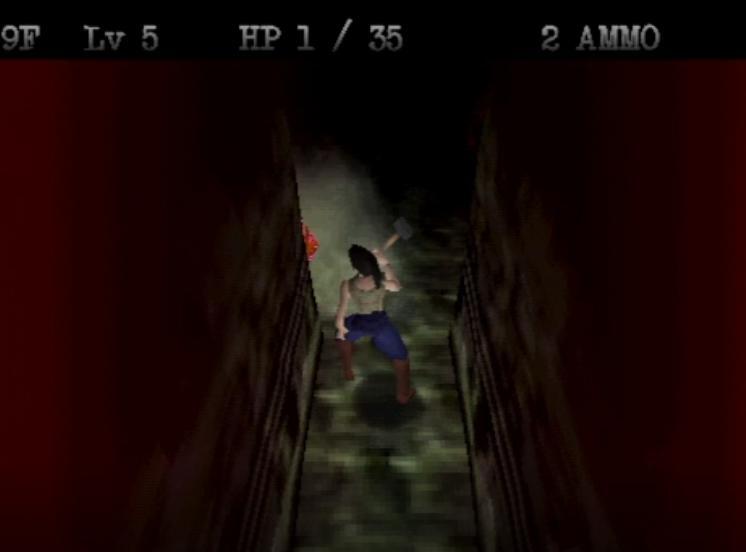House of Necrosis: Merging Classic Horror with Tactical Dungeon Crawling

Prepare for a unique blend of classic survival horror and strategic dungeon exploration with the upcoming title, House of Necrosis. Slated for an October release, this intriguing game promises to deliver a distinct experience by fusing the beloved aesthetic and atmospheric tension of retro Resident Evil titles with the unpredictable, turn-based mechanics of a mystery dungeon. Players can anticipate navigating an ominous environment reminiscent of early horror classics, where every step and decision carries significant weight. This innovative approach aims to captivate fans of both genres, offering a fresh perspective on what a horror-infused dungeon crawler can be, challenging players to adapt and strategize within a terrifying, ever-changing landscape.
The gaming landscape is constantly evolving, yet some concepts remain timeless, often finding new life through innovative combinations. House of Necrosis stands as a compelling example of this trend, drawing inspiration from the foundational elements of survival horror while injecting the strategic depth characteristic of mystery dungeon games. Its announced arrival in October positions it perfectly for players seeking a thoughtful yet chilling experience as the nights grow longer.
Embracing the Retro Horror Aesthetic
The immediate appeal of House of Necrosis stems from its strong evocation of retro Resident Evil vibes. This aesthetic typically translates into a specific set of design choices that prioritize atmosphere, tension, and a sense of vulnerability over pure action. Players can expect an environment that feels oppressive and claustrophobic, possibly utilizing fixed camera angles or pre-rendered backgrounds that enhance the cinematic feel while also limiting the player’s field of view, contributing to a constant sense of unease. Resource management is often a cornerstone of this subgenre, where ammunition, healing items, and inventory space are scarce commodities, forcing players to make difficult choices about when to fight, when to flee, and what precious items to carry. The narrative is often unfolded through environmental storytelling, cryptic notes, and the slow unraveling of a dark mystery, deepening the psychological horror rather than relying solely on jump scares. This combination creates a powerful sense of dread and isolation, immersing players in a world where survival is never guaranteed.
The Strategic Depths of a Mystery Dungeon
While the visual and atmospheric cues nod to classic horror, the core gameplay loop of House of Necrosis is fundamentally rooted in the mystery dungeon genre. This means players will likely encounter procedurally generated levels, ensuring that each playthrough offers a fresh challenge and prevents rote memorization. The unpredictability of dungeon layouts, enemy placements, and item drops demands constant adaptation and strategic thinking. Exploration becomes a perilous endeavor, with hidden traps, environmental hazards, and unexpected encounters lying around every corner. Item identification, often a staple of the genre, could add another layer of uncertainty, requiring players to risk using unknown items or cautiously testing them to discern their properties. The emphasis is on careful movement, calculated risks, and a deep understanding of the game's systems to navigate increasingly complex and dangerous environments. The roguelike elements, while not explicitly detailed, often suggest high stakes, potentially including permanent consequences for failure, which would further amplify the horror aspects.
Turn-Based Combat: A Calculated Approach to Terror
The decision to implement turn-based combat within this horror framework is a particularly intriguing design choice. Unlike real-time action horror where quick reflexes are paramount, turn-based systems transform every encounter into a tactical puzzle. Players will need to meticulously plan their movements, attacks, and item usage, considering enemy positions, their own character's abilities, and the environment. This deliberate pace can paradoxically heighten tension; instead of frantic button mashing, players are given time to contemplate their demise, making each decision fraught with consequence. Positioning will likely be crucial, allowing players to exploit environmental chokepoints or avoid being surrounded. Understanding enemy attack patterns, weaknesses, and movement capabilities becomes essential for survival. This strategic depth ensures that encounters are not merely tests of strength but intellectual challenges, where a well-thought-out plan can overcome seemingly insurmountable odds, but a single misstep can lead to a swift and brutal end.
A Synergistic Blend of Genres
The true genius of House of Necrosis lies in its potential to create a unique synergy between these distinct genres. The retro Resident Evil atmosphere provides the perfect backdrop for the perpetual dread and uncertainty inherent in mystery dungeons. Imagine the psychological tension of slowly creeping through a dark, derelict mansion, only to find that its layout is never the same, and the creatures lurking within are governed by a turn-based system that demands strategic foresight. The scarcity of resources, a hallmark of survival horror, gains even greater significance when combined with the randomized nature of dungeon crawling, where finding a crucial healing item or a powerful weapon might be the difference between life and an untimely demise. This fusion promises a game that is not just scary, but intellectually stimulating, requiring players to engage with both their primal fear responses and their strategic planning capabilities simultaneously. It’s a concept that could redefine expectations for both horror and roguelike enthusiasts, offering a fresh, challenging, and deeply immersive experience.
Anticipation Builds for an October Release
With its October release window, House of Necrosis is poised to become a standout title for the Halloween season, offering a more cerebral and strategic alternative to traditional horror releases. Its innovative blend of classic survival horror aesthetics with the replayability and tactical depth of a turn-based mystery dungeon game ensures it will appeal to a broad spectrum of players. From those who fondly remember the golden age of fixed-camera horror to fans of challenging roguelike experiences, this game is set to deliver a memorable and terrifying journey into the unknown. The anticipation for this unique hybrid is palpable, promising a fresh take on terror that emphasizes careful thought as much as chilling atmosphere.
